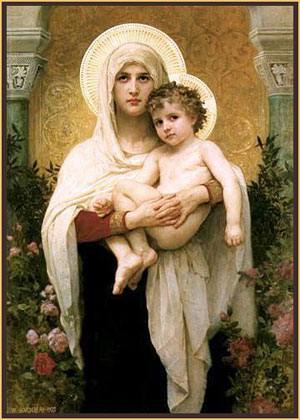
Article by Ganganath on the Mysteries of Jesus and Mary
Jesus Christ is certainly one of the greatest spiritual figures to have blessed the world and uplifted humanity over the past several millennia. While being the dominant spiritual influence in Western civilization, Jesus is also revered as a great prophet in Islam as well as one of many avatars, or God-men, for Hindus. While some Christians may consider Jesus to be the only Son of God, the more inclusive Eastern view is that there have existed throughout the history of the human race many God-realized saints who coexist harmoniously, with each one expressing spiritual truths in a manner that is uniquely suited for the time and culture in which they lived.
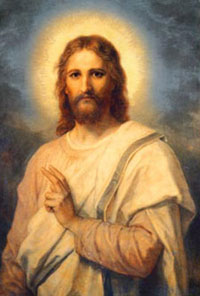
Jesus
While Jesus Christ’s exoteric teachings of love and forgiveness, as expressed in the Gospels, are simple to understand by the masses throughout the world, it is entirely possible that he reserved more esoteric teachings for his inner group of close disciples. Spiritual masters throughout all wisdom traditions, whether it be Hindu, Buddhist, Sufi or Taoist have agreed with Jesus’ pronouncement “Cast not ye pearls before swine.” The earth must be well tilled and found receptive before sowing the precious seeds of higher mystical knowledge.
The great Masters, who guide humanity’s spiritual evolution, dispense not only what is needed but also what can be assimilated at any particular time in history. Just as a teacher would not teach calculus to a third-grader, the high Masters gauge what level of teachings are appropriate for those who they are striving to uplift.
Western Spiritual Pioneers and the Dawn of a New Era
In the late 1800’s and early 1900’s a new era in the spiritual history of humanity began with the advent of Eastern mystical traditions into the West, which up until that time had been dominated almost exclusively by the prevailing Judeo-Christian religious view. Spiritual pioneers such as Alexandra David-Neel, Madame Blavatsky, Nicholas and Helena Roerich, Lama Anagarika Govinda (Ernst Lothar Hoffman) and the Oxford scholar W.Y. Evans-Wentz traveled extensively throughout the East, studied with great Masters and brought back to the West the spiritual treasures of India, Nepal and Tibet. We are indebted to these scholars, mystics and explorers who underwent great hardship to discover the priceless gems of spiritual wisdom that the Masters of the East had long protected.

Alexandra David-Neel, Madame Blavatsky, Nicholas Roerich, Helena Roerich, Lama Anagarika Govinda and W.Y. Evans-Wentz
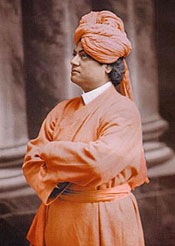
Swami Vivekananda
While the early European spiritual pioneers may have represented the first glow of the dawn, Swami Vivekananda’s electrifying speech in Chicago at the World Parliament of Religions in 1893, can be seen as the bursting forth of the first ray of the rising sun. In that speech, Vivekananda proclaimed, “I am proud to belong to a religion which has taught the world both tolerance and universal acceptance. We believe not only in universal toleration, but we accept all religions as true.” A stream of Eastern teachers followed in Vivekananda’s footsteps, bringing the next stage in the dispensation of Eastern mystical traditions to the West. Soon, spiritual terms like yoga, meditation, karma, chakras and kundalini became familiar concepts to Westerners.
The ancient teachings of the rishis, yogis and lamas that were beginning to be introduced to the West were significant because they contained the yogic techniques to not merely worship God in the dualistic sense of “I and thou,” God and worshipper, but to actually attain mystical union with God.
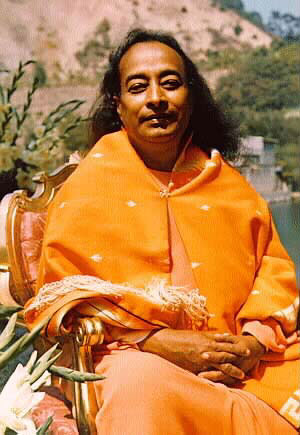
Paramahansa Yogananda
Paramahansa Yogananda, author of the spiritual classic “Autobiography of a Yogi,” was one of the most dynamic and prolific of the Eastern teachers who introduced time-tested yogic techniques for the attainment of Enlightenment and God-realization. Yogananda, expressed the ancient yogic teachings of India in a manner that embraced Christianity and allowed Westerners with a Christian orientation to utilize practical yogic techniques for the evolution of consciousness while remaining Christian.
Yogananda devoted the last years of his life, 1948 to 1952, to completing books that he intended to leave behind to guide humanity’s spiritual development. The last book that he wrote was his masterwork, “The Second Coming of Christ”, “The Resurrection of the Christ Within You.” It has been reported that upon finishing “The Second Coming of Christ,” Yogananda requested that it not be published until after the year 2000 and it was eventually published in 2004.
Why did Yogananda ask that his major contribution to the understanding of the original teachings of Jesus not be published until nearly fifty years after his passing? The answer to this question is related to other mysteries invoving Jesus, namely where did Jesus go during the sixteen unaccounted years of his life often referred to as the “Lost Years,” and another mysterious pronouncement by Jesus that, “Even the least among you will do works greater than these.” While these questions may seem unrelated, an investigation into their answers brings one to a remarkable unifying conclusion.
The Importance of the Yogic Tradition of Indian Siddhas
While the teachings of Jesus have flourished over the last 2,000 years, we have not witnessed up until now any significant number of people performing miracles like those associated with the life of Jesus. Yet, those very same miracles have been performed by numerous saints in India for thousands of years both before and after Jesus. These miracles, known in India as siddhis (supernormal powers), while not the goal of spiritual development, are the by-product of a degree of attainment as a Siddha, or perfected being.
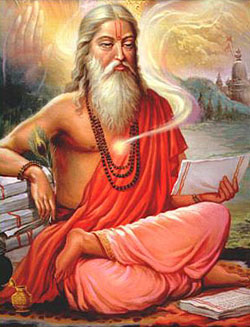
Siddha Agastya
The Siddhas of India were not rigid adherents to orthodox Hinduism. They were the open-minded spiritual rebels of their times who pursued mystical union with God while rejecting sectarianism, ritualism, superstition and the caste system. They were also known as master healers who were experts in the use of herbs to promote health and longevity.
The Siddhas believed that everyone, irrespective of their social position, had the ability and right to experience God directly without dependence on intermediaries. Because of this open-minded and egalitarian approach to spirituality, the Siddhas were often persecuted by the orthodox Hindu establishment whose control of the masses was threatened. In much the same way as great Sufi Masters were persecuted and even put to death by orthodox Muslims for proclaiming their oneness with God, the Siddhas were derided by Hindu priests and falsehoods were spread to defame them.
The result of this persecution and misrepresentation of the true teachings of the Siddhas is that their immense contribution to the spiritual advancement of humanity has been marginalized and nearly lost until today.
The Lost Years of Jesus
The question of where Jesus was during the sixteen years of his life that are unaccounted for has long been a subject of speculation. Many have believed that he traveled to the East. After all, the three wise men came from the East to herald his birth and there was considerable travel along trade routes like the Silk Road. It is entirely possible that as a young man Jesus may have been drawn to travel to areas long associated with intense spiritual practice and where great Masters lived who had attained God-realization.
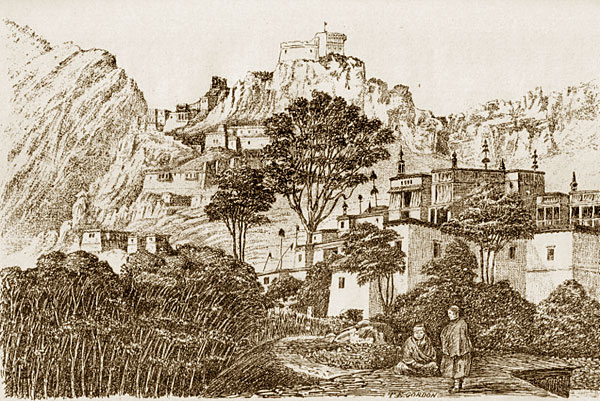
Hemis Monastery, Ladahk as it looked in 1876
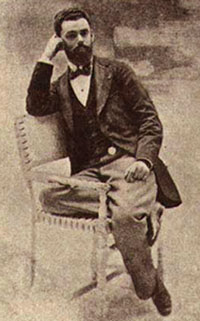
Nicholai Notovitch
Beginning in 1887, the Russian historian and scholar Nicolai Notovitch claimed to have discovered evidence of Jesus’ travels in Asia. After a fall from his horse during an expedition in Ladakh, Notovich spent time recuperating in the monastery of Hemis. During his stay there, Notovitch was permitted to see ancient manuscripts, yellowed with time, recounting the life of a great prophet from Israel, named Issa, and his journeys in India, Nepal and Ladakh. The manuscript described Issa’s arrival in India at the age of fourteen in the company of merchants and his spending time in many holy cities such as Jaganath, Rajagriha and Benares. Issa is described as being strongly against the caste system that denied the lower castes access to spiritual teachings, a view that was characteristic of the Siddhas. The manuscript goes on to say that, like the Siddhas, Issa incurred the wrath of the orthodox Brahmans whose power as custodians of all spiritual knowledge was threatened. Upon his return to Europe, Notovitch attempted to share his remarkable discovery with church officials and was strongly urged not to publicize his findings.
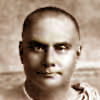
Abhedananda
Later, in 1922, an Indian monk named Swami Abhedananda, who was skeptical of Notovich’s story, also visited the Hemis monastery during a pilgrimage to Tibet and asked the monks there if Notovitch’s story was true, to which the monks replied that it was indeed true. The abbot then showed Swami Abhedananda a copy of the original manuscript that was kept in the Marbour monastery near Lhasa, which resulted in Abhedananda being transformed from a skeptic into a believer of the Issa legend.
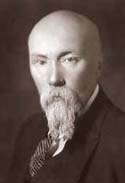
Nicholas Roerich
The Russian artist and mystic Nicholas Roerich added to the legend of Issa. Roerich and his wife Helena, traveled extensively throughout India, Ladakh, Nepal and Tibet researching the spiritual traditions and culture of these countries. During a three year expedition, Roerich painted over 3,000 paintings of the Himalayas and visited Hemis monastery. The Roerichs eventually settled in Kullu, in the foothills of the Himalayas, and established a research facility called Urusvati, where along with their sons they worked on translating Tibetan texts and studied the use of Himalayan herbs. In 1925, Nicholas Roerich referred in one of his books to Tibetan writings that described that Issa (Jesus), at the age of twenty-nine, returned to Palestine after his travels throughout the Himalayas.
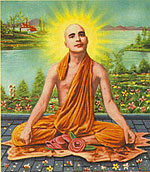
Ramatirtha
But, even more remarkable was Swami Ramatirtha’s claim in his book “The Spiritual Power That Wins,” that Jesus had survived the crucifixtion by entering into samadhi for three days, “a state where all life functions stop, where the pulse beats not, where the blood apparently leaves the veins, where all signs of life are no more” and then “like a yogi came to life again” and after being healed returned to India where he spent the rest of his life.
Ancient Wisdom – the Solution to Modern Problems
The wisdom of the Siddhas is not something that is archaic, antiquated or out of touch with the modern world. A few years ago, Professor Stephen Hawking issued an invitation over the internet for people around the world to offer their suggestions as to how the human race can survive the next hundred years. The importance of the Siddhas is that they demonstrate to us what humanity is capable of becoming. By attaining their full potential and unfolding the innate abilities latent in us all, they show us what we all can be, individuals of unlimited love, creativity and wisdom, and that is the master key to solving our problems.
Perhaps, Paramahansa Yogananda saw that a time was approaching when humanity would be ready for the advanced yogic techniques of God-Realization that Jesus and the Siddha’s practiced. And perhaps we are at a new point in humanity’s spiritual evolution when the time has come to prove correct Jesus’ prediction that the least among us will perform greater miracles than those that he demonstrated. After all, he spoke the truth. Why shouldn’t we believe him and fulfill our destiny as divine souls?














Speak Your Mind